Welcome to Friday Open Thread, you beautiful buttered biscuits! It’s been a whirlwind week for me, truly. There are too many things. Too many deadlines. Too much travel. A few MAJOR LIFE CHANGES to boot. Oh boi, I can’t wait to share more with ya’ll when I can, but ultimately this week is good. In a way that’s like…WOW A LOT.
In a recent Valentine’s Day essay I wrote for this very site that was basically one long back-handed compliment to my partner of 14+ years, a commenter wrote that they felt very seen as someone with an avoidant attachment style. Friend, I did not really know what attachment styles were. Is this like an astrology thing? Or a Myers-Briggs thing? Or an enneagram thing? No, it’s not. Also, yes, kind of.
Of course, I immediately looked it up and felt very attacked/seen because indeed, I do have an avoidant attachment style. Are you curious? I know you are!
The idea behind the currently thrown-around attachment styles starts with the three attachment styles identified by American-Canadian psychologist Mary Ainsworth. (Attachment type theory started with John Bowlby, but the four attachment types you see flying about the internet are actually Ainsworth’s work…of course!) Ainsworth developed the strange situation assessment, which sounds like a self-help book that I definitely would buy, but is actually a scientific study of emotional attachment between caregivers and young children. This study involved a lot of crying non-verbal babies and I would not have been able to handle it. Geez. But it’s interesting!
From her research, Ainsworth postured that there were three attachment styles: secure, resistant, and avoidant. Another psychologist who worked under Ainsworth, Mary Main, added a fourth style, disorganization/disoriented style, which was acknowledged by Ainsworth as an additional possible attachment style. In the 1980’s, two psychologists, Dr. Phillip Shaver and Dr. Cindy Hazan, built on the attachment style work and developed a theory that looked at attachment style in relation to romantic relationships in adults. Their definitions and four-type matrix is the most common internet meme/quiz fodder used today: secure, dismissive-avoidant, fearful-avoidant, and anxious attachment.
It’s worth noting that the sample size for all this research was relatively small and also that the participants in the Ainsworth and Main studies were primarily babies with primary caregivers who were also their gestational carrier/bio moms and these theories really privilege Western, white, middle-class assumptions about parenting. So, like many things, we can get some fun and maybe even some insight out of thinking about attachment type without, like, ignoring that there wasn’t a race or cultural lens on this stuff at all. IMO, none of these styles are inherently better than another. Ainsworth postulated that 70% of the population has a secure attachment style, with insecure/resistant and insecure/avoidant making up 15% each. I’d guess that stat doesn’t hold true when you factor in race, class, sexual orientation, gender, and other marginalized identities and experiences, so, like, no shame in your game if you are, indeed, an “insecure” type (like me!). It’s not so serious!
Wanna know what dismissive-avoidant attachment style is? It’s me!
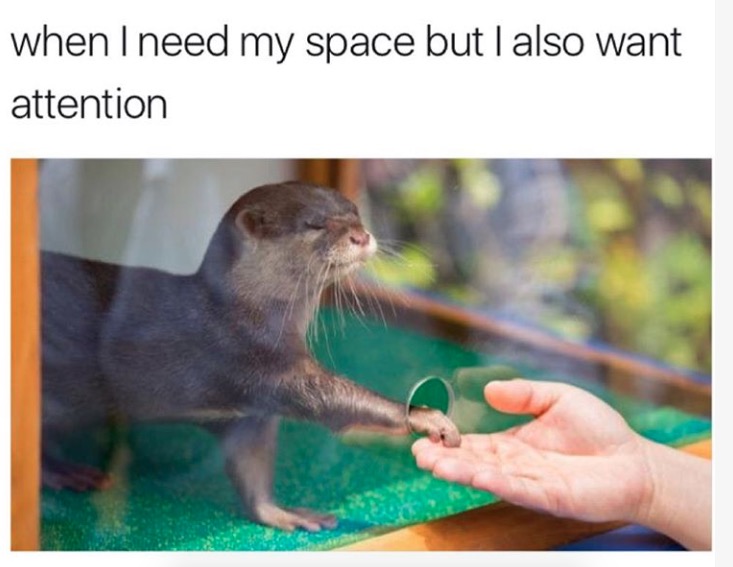
Avoidant attachment styles are like, super independent, OK? You can put us in committed relationships, but you can’t make us rely on you because we only depend on ourselves. Alright? OK. Glad we cleared that up. Also, an emotional display is like, the thing of nightmares. We don’t have outward emotions because shutting down is easier. I’m fun to date!
There are actually dismissive-avoidant types and fearful-avoidant types. Dismissive-avoidant types are more like, just likely to shut down and detach from loved ones when we get hurt and like to believe we’re completely independent from others. We still get hurt, but we hide that hurt from the world at all costs.
Fearful-avoidant attachment types don’t want anyone to get too close, but are also afraid of losing people. Like, they don’t want to have emotional reactions, but the emotions are overwhelming and then they have BIG emotional outbursts in relationships. They want to be close to people, but are also afraid of getting hurt.
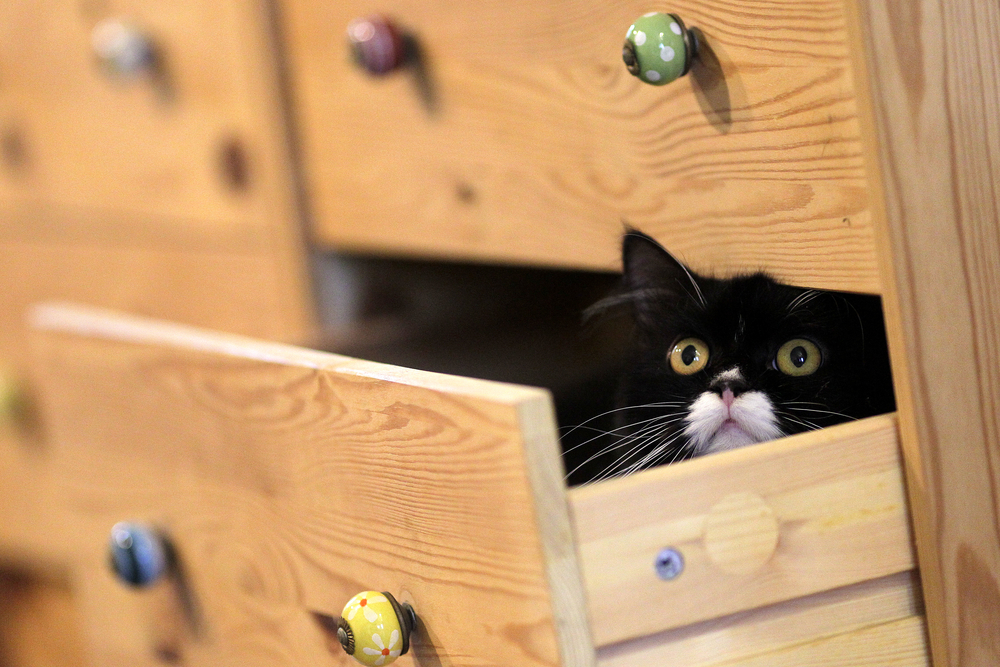
Anxious attachment types, also called insecure or preoccupied (though technically the avoidant types are insecure types, too), are, like super desperate to form a deep bond with someone else in a relationship and can over-romanticize their relationships. They often feel afraid of losing their partners and react by clinging or pulling that person even closer, which ironically can result in pushing them away by emotionally suffocating them. They’re afraid of being left alone and interpret any sign of avoidance or independence as a sign of their worst fears.
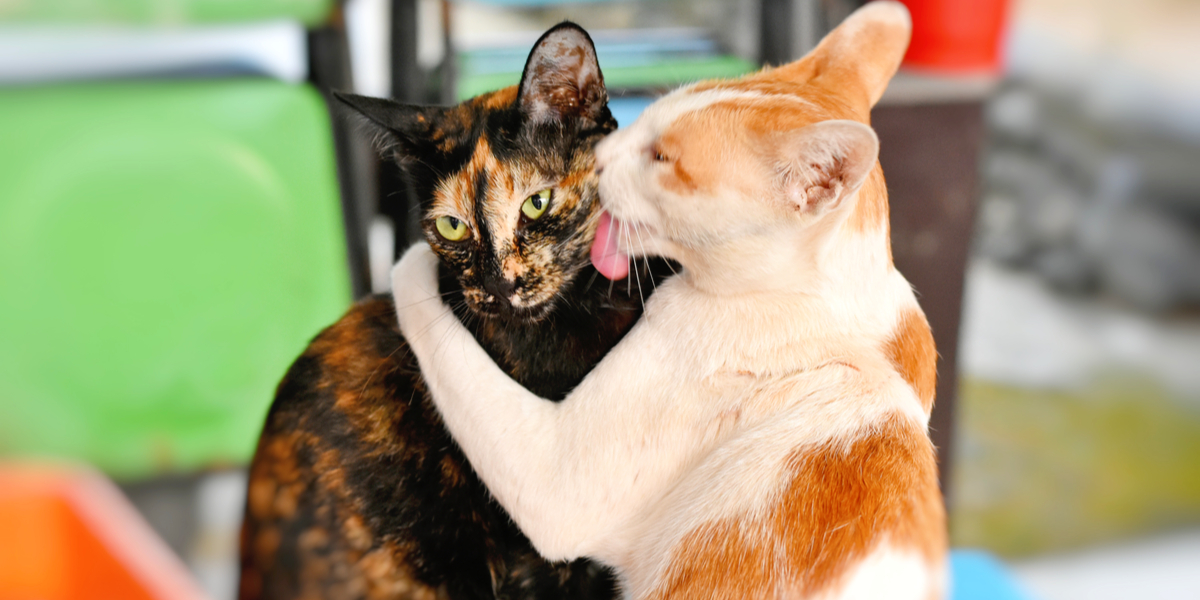
Then, of course, you have your secure attachment types. You lucky ducks are satisfied and see your relationships as a secure home base from which you can go about your lives freely as grown-ass adults with independent needs and feelings. Neat!
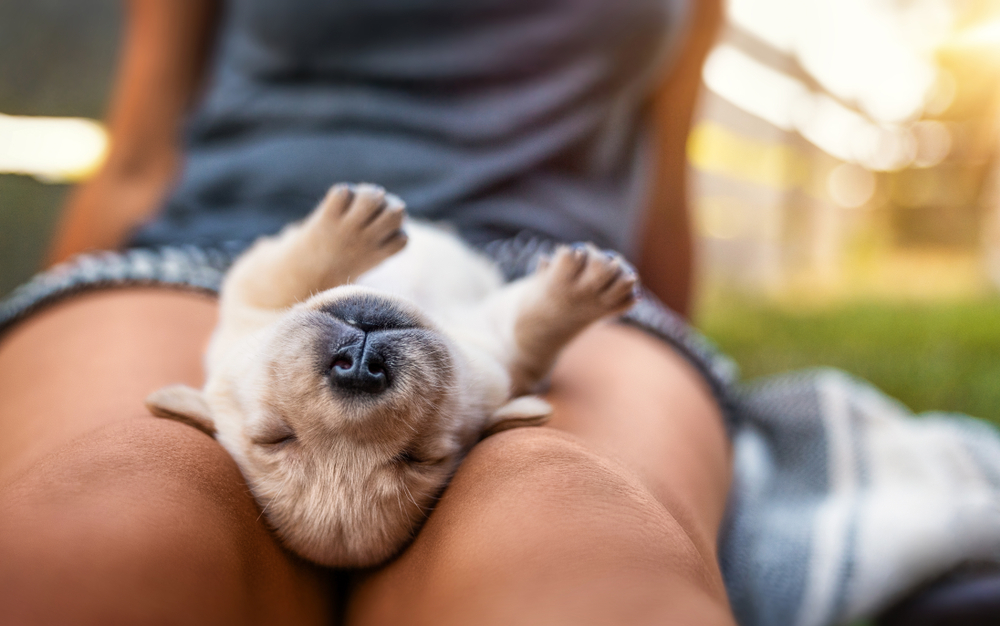
Notably, you can have more than one style and you can take your natural style and adapt it to be a more secure style by figuring out what your hang-ups are. You can learn a lot about how your natural attachment style helps you show up in different types of relationships, for example, at work or in love, and in our social networks.
For me, I felt really understood when I learned my attachment style. After a lot of work, I think I’ve become more of a secure—not naturally—but in how I choose to approach my closest relationships. I still will always be a person who doesn’t like to cry in front of other people, though, and who runs everything through a filter before sharing it with the world and, like, that’s OK!
Want to know what your attachment style is? Well, I found a few quizzes, but I wasn’t happy with any of them. HAHA. However, you can take this one (which makes you pay for more info, BOO) or this one (which if totally free, but doesn’t match up with the four typical types exactly) or this one (which is pretty close, but also specifically tied to a book promo). Honestly, uh, I think you probably know who you are without a quiz. I see you. You see yourself.
So tell me, what is your attachment style? How has it manifested in your life and relationships? Or, if you’d rather not say, that’s cool, too! What else is good and interesting? Did you get enough sleep last night? Are you making plans for the weekend? What’s the weather like where you are? (We’ve still got snow where I am.) Give me your bits and pieces! I wanna hear from you! Even though I have an anxious-dismissive attachment style, the internet is enough of a buffer for me to get real deep with ya’ll!
How To Post A Photo In The Comments:
Find a photo on the web, right click (on a Mac, control+click), hit “Copy Image URL” and then code it in to your comment like so:
If you need to upload the photo you love from your computer, try using imgur. To learn more about posting photos, check out A. E.’s step-by-step guide.
How To Post A Video In The Comments, Too:
Find a video on YouTube, copy the URL, and paste the link on its own separate line in your comment. You no longer need to use the “embed” code!



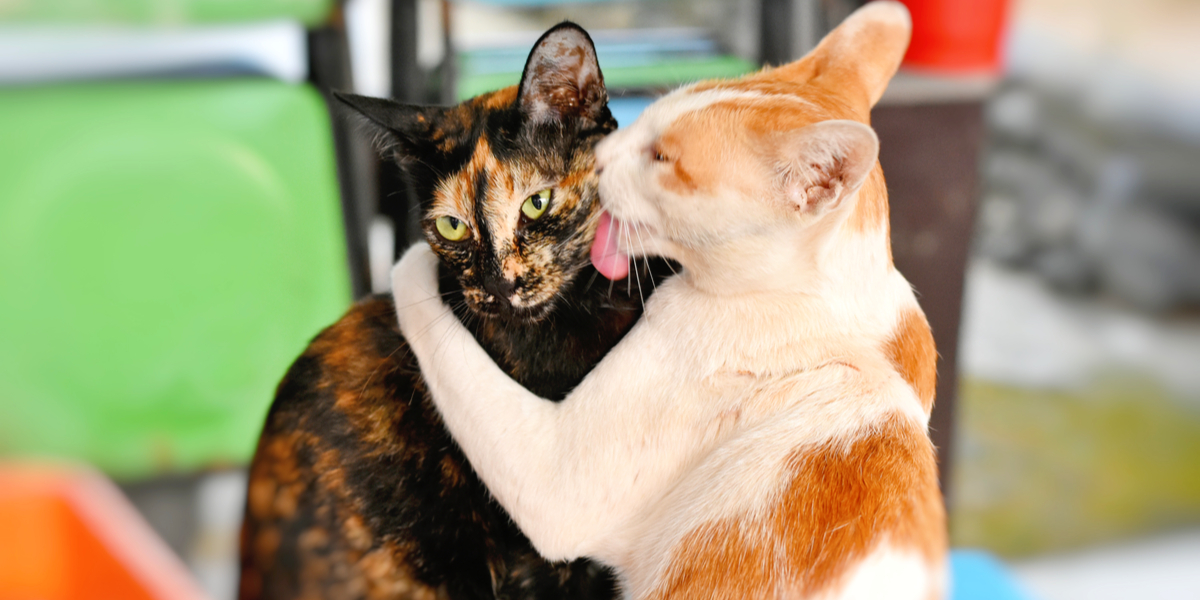




Comments
I had an awful thought, and I need to get it off of my chest. Netflix kills series that it doesn’t own after three seasons, and the way it does deals it has do not compete clauses so that the series can’t migrate to another channel/platform (see the Marvel Netflix series and “One Day at a Time”). Netflix doesn’t own “She-Ra”. I’ll let you finish that thought from there. If that’s the case, then we need to be proactive. We need to ask Noelle Stevenson about the particulars of her deal with Netflix, and what we can do to help BEFORE “She-Ra” reaches the end of its third season.
I don’t know how to do this other than to yell on social media, but I’m truly distraught about ODAAT. :(
WOW KaeLyn did you know this article about attachment styles in the workplace just came out? https://www.nytimes.com/2018/12/19/smarter-living/attachment-styles-work-life-balance.html
As a person who has worked in a pretty toxic non-profit environment for several years, I came across this the other day and was like gee! I have picked up some really bad tendencies, and I think it’s from working in an environment that is driven by the insecurity & white savior complex of our CEO. It’s helpful to have tools to recognize what’s going on and how to navigate it (and also, why are so many non-profits like this ugh!!!)
Edit to say I got excited and didn’t see you’d already linked this!!! But I am so excited to read this and all the other resources you linked!
I read that, too, obvs, but also I thought it was really helpful both in understanding myself and some of the people I work with.
big sigh that your fearful-avoidant attachment excerpt has blatantly exposed me :/ i’ve got some realities to confront over here!!
I am in a LTR with a fearful-avoidant. WE HAVE FUN. Haha. Seriously, though, I don’t think it’s a bad thing. I found it really interesting to think about once I got over being offended at being called out. LOL
all scorpios are anxious attachment, we can’t help it
I feel like all scorpios are avoidant! LOL.
Avoidant Scorpio reporting in to be counted. (I also feel like all Scorpios are avoidant? But also all Scorpios with Aquarius moons are *definitely* avoidant.) (me)
Oh man I used to be the most dismissive and most avoidant dismissive-avoidant before therapy. Now I’m…more self-aware about it, at least?
I’m with you! I think I’ve gotten a lot better, but uh, I’m still dismissive-avoidant at heart and knowing this definitely helps me understand how I show up in my relationships (both platonic and romantic).
Ahhh! This came up on my Facebook and I had to reply straight away. I have found realising I have anxious attachment SO helpful in navigating my relationships. Unfortunately I am often attracted to avoidant types, which is something that is quite common apparently and that I am working on. Had a week full of up and downs – performed in London with my one woman show and that was amazing. However reeling from some life stuff and my polycule imploding. Basically trying to figure out how to better have boundaries – something us anxious attachment types are not the best at!
Seconded for being a anxious attachment person who seems to always wind up with avoidant types! It’s the worst!
Ahaha. I’m apologize on behalf of all avoidants. We’re the worst!
I didn’t even read the descriptions at first, I just saw the name “fearful-avoidant attachment” and immediately threw both hands in the air and started laughing that high-pitched laugh you laugh when you’ve been called out
In other news, it is finally spring here and my depression has turned from seasonal to regular!! I can deal with that!! the pollen is already killing me, though. I’ve never lived outside Georgia before but I’m told that there are states where you *don’t* spend an entire season covered in yellow dust?
Hope you survive the allergy season! I am a big fan of over-the-counter Claritin, myself.
Fearful avoidant here too! That’s both horrifying and freeing to admit. I had to do both the enneagram and Clifton strengths this year. I found it very triggering at first to read about myself in such honest terms. But it has been very valuable information.
Ahhh the sticky yellow dust!! I grew up in Georgia and South Carolina but have been living in the UK for a long time, where we do not get the yellow dust, and no one believes me or even understands when I try to explain it. It almost feels like a kind of nostalgic fever dream. In Georgia, do you also get a weird millipede season that sort of overlaps with the pollen?
I feel like absolutely the only reason I come anywhere close to “secure” is because my wife is incredible and is so open and honest and works hard to make sure I feel secure in our relationship. It’s taken a lot of conscious work on my part too, which my wife has been so gentle and generous about supporting – I’ve traditionally been a bit of a mess in relationships (understatement of the year?).
In related news, I’ve been low-key panicking about gender for a while. This week it got to feeling more and more pressing, and I finally found the words to talk with my wife about it, who has been super supportive. It’s freeing and also earth-shatteringly terrifying to contemplate being…something other than the gender I assumed I was (and terrifying to admit to other people, even through the internet buffer).
I’m not sure what that “something other” is, though, and not sure how to go about figuring out where I fall on the gender spectrum. It’s overwhelming to think about where to go from here. Anyone have advice/fav articles or books/suggestions of baby steps to explore a more non-binary or masc gender identity?
I’m cis and can’t offer any advice, but just wanted to say well done on talking to your wife and on sharing your feelings here, and I wish you all the best in exploring it further and figuring it out.
I actually do have a great book recommendation, @oliviaf, though I’m not trans or non-binary or even gender non-conforming. However, I own this book and teach it, as well, and have received lots of great feedback from students in my class who are exploring their gender(s).
How to Understand Your Gender: A Practical Guide For Exploring Who You Are by Alex Iantaffi and Meg-John Barker
This book looks great, thank you! The internet has felt like an intimidating place to try and find trans* info, but Autostraddle is always such a safe haven.
Massive congratulations for talking to your wife–and for taking steps to make it more real for yourself too! I’ve really recently started identifying as non-binary, after a really long time of just assuming that all cis women had intense bouts of gender dysphoria cuz how could you possibly not amiright??
My non-binary baby steps so far have been journalling, self-talk and talking to my partner and close friends. Some of those talks have been the intense, painful, scary kind (especially with my partner–it’s so, so, so frightening to ask questions about how far my gender and their orientation will intersect and overlap). But it’s also been important to have more casual, chatty, jokey conversations. ….I’m actually meeting some friends today and planning to ask them to try out they/them for me (am nervous).
With masc stuff, have you been playing with it at all before? I recommend trying some boxers. That was powerful for me. Gradually incorporating menswear can also be fun…flannels, t-shirts… you can wear buttoned shirts unbuttoned over something else and it makes fit a lot easier, feels like a softer masc, and makes a good spring layer. Also, some of the clothes that make me feel most masc aren’t strictly menswear. Like, my docs with skinny jeans give me a very masc feeling of swagger, and so does my blazer, even though it’s from the women’s section.
Spend some time asking yourself what masc *feels* like for you, and then ask if you have stuff in your life already that gives you that feeling, or if you have a sense of directions you might lean into to get the feeling. I’ve spent some time playing with different ways of holding my body: how I sit, what I do with my arms. Taking selfies and seeing which angles and expressions make me feel most masc and handsome. If you like makeup, I had a fun session trying contouring for drag kings. It was really cool to see how the same tools and techniques could be used to either feminise or masculinise my face.
Basically just sending you a lot of love and encouragement and I’m really glad you’re having the courage to go on this journey
This is such great advice – thank you for sharing your journey and these great ideas!! I’ve been trying out some more masc clothing, but I’m also excited to try some of your other suggestions :)
My wife suggested trying out new pronouns but I feel really self-conscious about it around other people, so she suggested that she try using them when talking to our dog about me 😆 We’ll see how it feels…
http://darahoffmanfox.com/
I have found this person to be super helpful! It’s tough…I kinda feel like I’m ‘too old’ to be exploring a different gender identity but hey…we’re all in this together <3
Thank you! I also feel old for this, but I’m glad not to be alone <3
Well I’m currently relationship-avoidant I don’t really know what style I would be if I was in a relationship as I think it has probably changed with age and with increased confidence in myself as a person.
Yes, according to what internet stuff I’ve read, you can become an “earned secure” attachment style by dealing with your shit, basically. So…here’s to increased confidence with age!
Which one of those attachment styles has a super-paranoid hyper-sensitive sleeper personality buried deep inside that comes out when you least expect it and blows your relationships to hell and back ?
I’m that one.
Ha! Um, I don’t know. I’m not the expert here. Is that the fearful avoidant?
The keyword may indeed be Fearful. Sigh
I think I am a little of everything, but a bit leaning towards anxious type. Some of it has to do with being the first child and my parents learning what & what not to do. The other part being friends who could not handle their emtions after telling the person I like her(told a friend from college this and stoped speaking to me like really) for example.
How is everyone’s week going? I spent my Sunday doing a very popular activity & drove to Lake Elsinore in Northern LA County to watch the poppies in bloom. No one wanted to join, so I went solo. It was beautiful, so long as you ingored the hundreds(100,000+ over the weekend) of people in the area; some of whom were walk & rolling on the flowers for that insta likes UGH! Trevor Noah mentioned this on Daily Show the other night about some people’s actions, at the same location, which made me feel heard weirdly enough. I was visibly queer with my Autostraddle they/them pin and one from Cuties, plus a plaid shirt. Not sure what I will do Sunday either go see more flowers at a different area, or ask my best friend if I can take her dog to a dog park and run into other cute dog owners.
Oh Saturday had a relative judge me cause I said I am technically in an open relationship(I was not that sober). I told them I am exploring what I want and the person would not get it. So, does Autostraddle have a guide to coming out as polyam/non-monogamous? I’ll be searching for that in a moment.
A few images from Sunday.


Thank you for viewing and reading my post. Have a positive first weekend of Spring!
Dunno why that first image didn’t show up.

Gorgeous photos, @needlesandpin!
I don’t know that we have a coming out guide, but we do have a lot of non-monog/poly content! Maybe something will be helpful?
Thank you kindly.
Beautiful poppies!!!!
Thank you, I made sure to avoid all the people.
I don’t feel like I know what style I am. I know what
I’ve not gotten from my family of origin is acceptance of weakness of any kind. I have so many conversations with my parents that end with me feeling defeated and frustrated because I admit that I don’t want to do something that hurts, that I feel sad and angry sometimes, or where I complain about something sucking. I want a romantic partner who I can be vulnerable without being made to feel like I’m inadequate failure. So, uh what does that make me?
I think you’re probably likely to be avoidant, like me, though it sounds like you were socialized that way so maybe that’s not your true form?
ok this is cool! i feel comforted knowing there are others with an anxious attachment style.
i wonder if a secure attachment style almost always comes over time, as people get to know each other well?
I think the therapy answer is that we’re all supposed to be able to achieve a secure status, even if we’re not naturally predisposed to it. I dunno!
Omg I have a concussion right now (rugby) so I can’t really read this whole thread but I feel like I’ve reached the next level of lesbianism by inspiring a Friday open thread. I can’t wait to tell my therapist (who first told me about attachment styles!) and read the whole thing when my brain recovers!
(Fun game: count the lesbian stereotypes in those two sentences.)
ahahaha @sketchyblondes!
Thanks for clueing my in!
Hah. My new therapist just mentioned attachment trauma to me – as something to work on as part of my PTSD treatment and as something that would make sense given that I grew up in an extended family with multinational sexual abuse.
She did not mention attachment styles but reading this it’s pretty clear I have a fearful avoidant style.
Um, yeah, that’s multi generational abuse. Thanks autocorrect.
Hello I have a mostly secure attachment style but border on anxious especially when I partner with avoidant people — funny how that works! Thanks especially to my triple Scorpio ex!
TRIPLE SCORPIO. Sounds dreamy. Also dangerous.
Anxious, hands-down. Ironically, so is my wife, so at this point we’ve basically ritualized reassuring each other that, no, we’re not planning on leaving each other/don’t secretly hate each other, etc.
Speaking of anxiety, I took my candidacy exams for my PhD this week! The good news: I passed! The bad news: Apparently I’m still serious deficient in a large but-as-of-yet-unspecified number of areas, and they mostly passed me on my potential to not being deficient at some point in the future!
Needless to say, my anxiety-managing skills have been in overdrive this week until they send me out the official memo from my committee explaining what I need to improve on. Honestly, my major fear is that, in order to deliver what they want, I’m going to have to sink more time into my research than I am already. In an ideal world, this wouldn’t be a problem; however, in the real world, where I’m paid $22k a year and my insurance doesn’t cover my wife (she’s running uninsured until August, so that’s fun), I’m really loathe to have to spend more than another 2-3 years going after that piece of paper. This is particularly true since I’ve been in grad school in some form or another for *eight* years now (2.5 for an MS, 2.5 for a PhD that fell through because there was no funding and my adviser was quietly relocating to Europe without telling anyone, and 3 at my current institution), and I’m just *exhausted* with it.
My adviser’s supposed to meet with me at some point next week to do a full debriefing on everything; in the meantime, I’m doing my best to keep busy so I don’t have yet another anxiety attack about it.
That’s a lot of stuff to handle, @tessaract87! Sending you lots and lots of love as you figure it all out. <3
I’m most definitely fearful-avoidant. I think it’s because my dad has always had an anxious – insecure style. He has always alternated between smothering my mom with affection and completely ignoring her. This created quite the toxic / dysfunctional / emotionally abusive situation in which to grow up, especially since it frequently included long lectures about self-improvement, ramped-up tyrades about failure and even throwing dishes! When the fire of his fits cooled, it was often punctuated by several weeks to several months where he wouldn’t speak a word to my mom, or otherwise acknowledge her existance. Most children who observe abuse in the home between their parents might get the implicit message that there are only two kinds of people; abusers and victims. Sadly, they end up being one of the two until they learn to examine and change their family patterns. I, on the other hand, recognized a third category; the loner, who would be completely immune to the cycle, so that’s what I became. From the time I was a small child, I couldn’t wait to grow up! As a grown-up, I figured, I’d have no one micro-managing my life, making me afraid, or yelling in my house! I could just happily engage in my own creative pursuits, and be left, peacefully alone! It doesn’t help that ever since I could breathe, walk and talk, it was pounded into me that Iwhatever I wanted out of this life, I had damn-well better be prepared to provide it for myself. I would like to change that, so I’ve been working on it. I’ve read handfuls of self-help books over the last 6 years, including the Ainsworth book you cite. I hope it’s not too late.
It’s definitely not too late! This is a very personal thing to recommend and I should admit that I need to take my own advice here, too, but if you haven’t already and are able to, consider seeking out a therapist! I know I could use one, too, and I know how good therapy is, especially when you’re in the mindset of wanting to work on yourself!
Thanks for this thread I didn’t know about these categories but they bring up some interesting things. For work I am.for sure the anxious avoidant type like a very big procrastinator seeing always the bad things that could arrive..I am trying to train on that though it comes from my parents they are kind of the same and always remind me of bad things that could arrive. Meditation and Buddhist teachings (especially those of Pema Chödrön) are helping me a lot to let go of this search for reassurance (as anyway there is none life IS insecure)..So my relationship attachment style is the same which makes me avoid relationships since a long time. Actually in my last relationship with a cis guy I was not in love with (bc I am a lesbian) and who was kind of psychologically abusive I still got very attached and I guess I would still be with him but luckily he found someone else and left me. And this makes me now afraid to get wrapped up in another situation like this so I get easily freaked out if women show too much interest before I know them and develop only feelings for non-available women. I have been not in a relationship for a few years now and it helped me to do things on my own and get more secure and I enjoy my freedom and time alone a lot but still don’t trust myself to not get wrapped up again. So well still trying to get more secure attachment schemes.
Hi everyone! This is my very first comment! It’s a very exciting time. After about 6 months of reading Autostraddle everyday I thought it was time for me to become a member and support this beautiful website that I am obsessed with! Big day.
I LOVE this topic. About 6 months ago, a couple months into my current relationship, my girlfriend introduced me to the idea. She learned that she was an anxious attachment person who had only been with avoidants up until me and it was messing with her that I was secure. In a good way, but she was assuming lots of things about my behaviour that weren’t true because she wasn’t used to it. This realization was huge for her/us and has led to many amazing conversations about how to best care for each other. It’s awesome.
Ahhhhhhhh! I’m so happy to be here :)
Welcome!
We’re happy to have ya.
HI HI HI @rachelmc!
Thank you so so so much for becoming an A+ member. It means to world to us! It feeds our families! It allows this site to exist in the world! I’m so glad you’re here, queer, etc.!
Also yay first comment I’m so happy you have found someone who complements you and helps you be your best self in your relationship. That’s a true treasure!
Which ever one is the I’ll enjoy what I can get and be sad maybe even hurt when it’s over but won’t stoop to begging especially if I was cheated upon. I’m that one.
Supposedly I’m easy to fall in love with because I don’t hold back much when I want somebody. It’s like my relationship with food if I’m hungry enough to eat a whole pizza I eat the whole pizza.
My toxic ex fits the anxious attachment type to a T and was a big Edgar Allan Poe fan. Breaking up with them made me enemies cause turning my back on such a romantically demonstrative person seemed very cruel and worst of all ungrateful.
I still don’t like listening to voicemails.
Lovely news time now.
This week I successfully used an icing bag(have had explosions in the past) and finished typing up the king cake recipe I adapted just need to edit it a bit maybe. Make sure I wrote the details I discovered while working it and not just the lock and stock recipe I wrote down.
Also learned I CAN cut apple slices thin enough for make apple chips and this weekend I plan to use my dehydrator for that purpose. Or dehydrate some citrus peel cuz I learned how to harvest citrus peels when making chicken tagine sans tagine. It’s very easy just get you a good a vegetable peeler.
Oh and a friend gave me skittles, a lot of skittles. <3
YUM I love dehydrated apples. Seriously, I have the best memories of my mom making them in her dehydrator. I also love to thinly slice an apple to make a savory glaze, which is something I just recently learned to do well and it’s all I want to eat now! Pork with sliced glazed apples!
Ugh, now I’m hungry!
Ha I’m always making people hungry.
Is there a difference between dehydrated apples and apple chips?
I love savory glazes and really do miss visiting farmer’s markets every 2 weeks, all those preserves
One of the things I’m (re)learning is barbeque sauce so can I make my own without upsetting my allergies. Real barbeque the sauce is a finishing glaze, anything basted on during the cooking is a mop for moisturizing purposes.
High five on leveling up your knife skills.
Dehydrated apples are kind of chewy. Apple chips are usually baked and crispy. I think that’s the difference. I have a toddler. We know a lot about various ways to eat fruit. :p
Wild, the apples chips I’ve had varied within the same bag between chewy and crispy.
You just gave me an idea.
Toddlers and Tangerines, a a photographic collection of toddlers and small children chowing down on fruit.
KaeLyn! This has nothing to do with attachment style but I have been meaning to get this to you for awhile and now I am reminded so here you go (and any other people with small children in their orbit): a book recommendation for Remi, Dinosaur Kisses by David Ezra Stein.
https://www.amazon.com/Dinosaur-Kisses-Stein-David-Hardcover/dp/B010729VZA/ref=sr_1_3?keywords=dinosaur+kisses&qid=1553314635&s=books&sr=1-3
The story is cute, the art fits it perfectly, and it’s a lot of fun to read out loud. Especially, I would assume, to a kid known as Baby T-Rex. It’s still in the rota for when my 8-year-old wants to be read to, so you may get some years out of it. :)
Attachment style…Trending and striving towards secure when in a good relationship, with tendencies for dismissive-avoidant to surface that I have to be alert for (in said good relationship) or double down on (in previous bad one, when I really really needed to get to the point of just being like “nope, this is over. Done now.”).
Thank you for this book recommendation, @iarranme! We’re always looking to expand to the dino section of the kiddo library and we actually don’t have this one!
Dismissive-avoidant high-five! I feel like I’m not actually dismissive or trying to be independent, I’m just terrified of being needy and emotions are overwhelming and so instead of reaching out for reassurance, I slam down a bunch of ice walls until I can be a reasonable human with healthy communication skills again. Or is that being a fearful-avoidant who just has in-bursts instead of outbursts? Are in-bursts a thing? Either way, I recognize that, by slamming down ice walls, I am already not being a reasonable human with healthy communication skills. This article is nifty and thank you for it.
I know those ice walls well. And the in-bursts! LOL. <3
I didn’t even need to read the description for Anxious, I just knew.
I don’t think I was always like this?
When I was nine, my father had a heart attack while working in a foreign country and no one would transport him home at first. Then, when he finally got home he couldn’t actually come home—he had to live in a quarantine bunker in another city strapped up to tubes for a while. That’s when I learnt that this wasn’t the first time he’d had a heart attack—he’d also had one while my mum was pregnant with me. So, basically, at nine I learnt that I’d always been close to losing my father and that he would probably not live to see me grow up (he’s still alive, by the way, medicine has come a long way).
That’s when the real anxiety started. I’d wake up in the night and go check that he was alive. Then I’d have dreams that I woke up to go and check on him, and the house was all quiet, and everyone were in their beds, but when I checked on them they were all dead and decomposed and there were only skeletons left.
I obviously don’t love being the anxious, clingy, emotionally overwhelmed type, and I’m working on it. My partner is the secure attachment type, with a side of clingy, so that helps ground me as I work on it.
Faustine, thank you for sharing about your father. That sounds like a really difficult thing for a kid to process and you must have had to be so resilient to make it through. <3
Anxious Attachment in a LTR with an Dismissive-Avoidant. We haven’t spoken for two days because I got upset that she made plans with someone else on the day we already had plans, and decided that I would be free to go out another day. Hasn’t apologised yet. It’s great.
Oh wow that sounds hard, @thevikingprincess! I’ve never been in a romantic relationship with this dynamic, but I’ve 100% been in friendships like this and I have to say the best thing has always been super explicit communication. And honesty about owning your shit on both sides.
I didn’t see “desperately clinging” on the list.
I’m no expert, but is that anxious? Haha!
im anxious and of course unsurprised i lOVE quizzes like this
kaelyn it has been a tIME over here and not in the best way pls send good vibes my way if you can spare them i hope youre doing well and having a good weekend!!!
Haha! I couldn’t find a good quiz for you, @asmithers! I’m sending you all the good vibes and energy. <3
Looks like I’m the only one here who (mostly) fits the dismissive-avoidant type, with a touch of the anxious kind, particularly when I was younger.
And this is why I’m in an open relationship where I live by myself. Joking aside, it IS an adaptive thing. I actually don’t mind living a with a partner – I’m not against intimacy – but they have to be super-secure and not display anything that appears like jealousy or controlling behaviour, because that just triggers the RUN AWAY reaction. By the way, controlling behaviour doesn’t have to be (potentially) *violent* – crying because I don’t want to go to a shitty movie with no notice when I’m tired after work counts, as does trying to hold my hand in public when I don’t feel comfortable with it while being surrounded by unknown hets. To pick a couple of real examples.
At least these days I also manage to tell people that I need to go for a walk or something for a couple of hours if I need a break while we’re having a significant conflict, and that I will be back. In my 20s, I would just leave, maybe sleep in the park. Then not talk about shit – still not great at that – and then break up to get away rather than deal. I’m doing more of the dealing-with these days, though. Not well, but better.
In terms of evolving enough to a truly secure style, hm, I know where it’s from – shitty childhood. Fixing it, maybe one day. At least I’ve fixed it enough that I’m more selective about who I get involved with, and not perpetuating behaviours that I *know* will hurt people I care about.
Oh, and “you can’t rely on us” seems a little much. You can absolutely rely on me for stuff I’ve agreed to. Sometimes we need to spell out exactly what that means, because assuming our needs are the same is a bad idea, in any kind of relationship. (Sorry, but a problem due to bad assumptions doesn’t care what our relationship attachment style is.)
So no, unfortunately, I am probably not to be relied upon for listening to an hours-long emo dump. I can be relied on to listen to what the actual problem is, what you want me to do about it, and to tell you whether I can do that or what I’d offer instead. You can rely on me to pay the bills and do the chores I’ve agreed to, to be civil to the other people in your life, to treat you with affection and consideration and love, and to prioritise your needs as much as possible (given the scope of our relationship).
If I’m acting out of selfishness and a lack of consideration, you are perfectly within your rights to pull me up about it. And yep, again when I was younger, I was often clueless and inconsiderate, intentional or not. “Detached” doesn’t have to mean “arsehole”. It might mean having to put work in about defining those boundaries a bit better, which I HATE, but too bad, we all have to work at shit in relationships we’re committed to.
But yeah, that is all about overcoming the cut-and-run impulse, and sure, if someone keeps doing that to you and can’t be relied upon for *anything*, not even basic consideration and respect, DTMFA. Some of us learn something after we’ve been deservedly dumped multiple times, eventually.
I was being a little tongue-in-cheek about the whole thing including “you can’t rely on us” as a fellow dismissive-avoidant! I think the whole point of this attachment style stuff (which I’m just learning about along with ya’ll) is that you can overcome the challenges of your attachment style once you realize what’s going on and how it’s affecting your relationships. But again, I’m no therapist or psychoanalyst. I wouldn’t take it too seriously! Like with all things “type” based, take the useful and leave the rest. :p
Oh, duh, obviously my sense-of-humour detector had a momentary fail.
But totally, like anything personality-wise, it’s not deterministic. And some of us arseholes do grow up a bit eventually (or do some therapy)!
This is, roughly, 76% of what I talk about with my therapist these days. I am absolutely 10000% anxiously attached to most people in my life, and it’s only now, in my mid-30s, that I see all of the signs of it. With some of my closest relationships, I have been able to get closer to a secure attachment style, like with my primary partner and best friends, but with other relationships, I now see how my anxious attachment affects it. I internalize a lot of it, so they may never see how much I panic when they don’t text me back immediately or cancel plans (“I knew it, they hate me!”), but I feel all of it.
Thank you so much for writing about this in such a digestible way!! And good luck to all of us as we all strive to be a little more secure and a little less anxious/avoidant :)